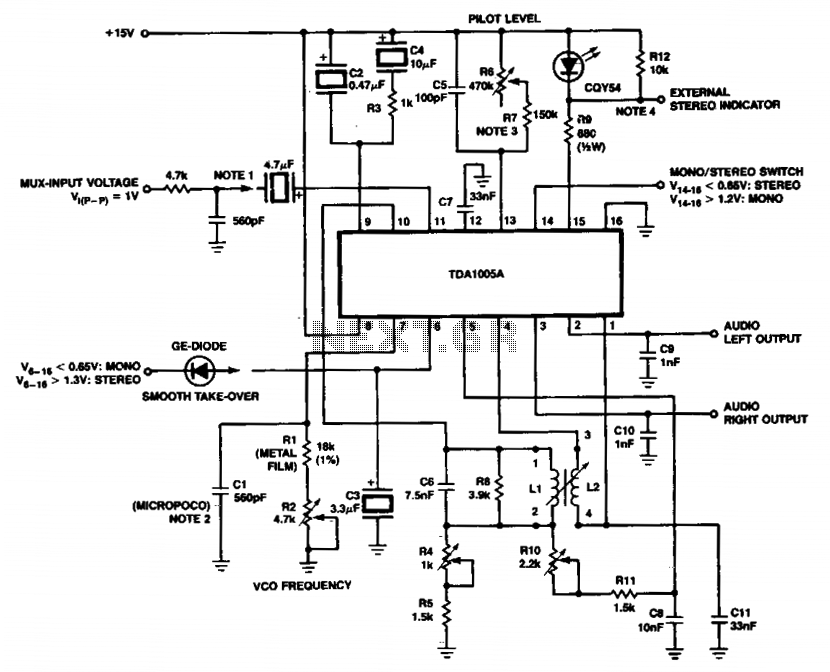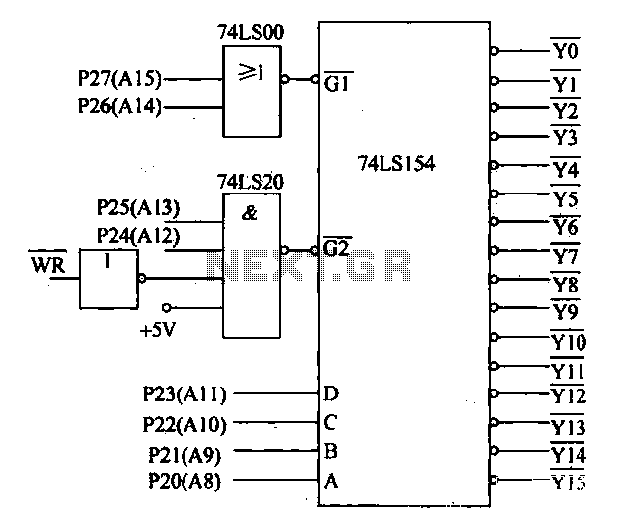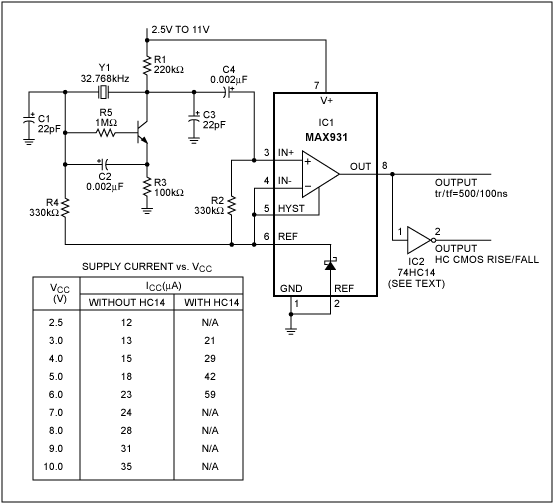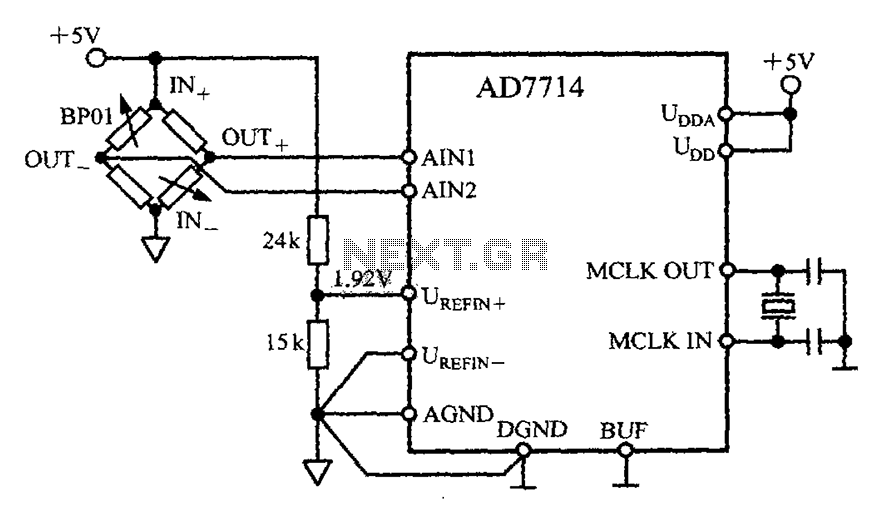
Low-Power Touch-Tone Decoder
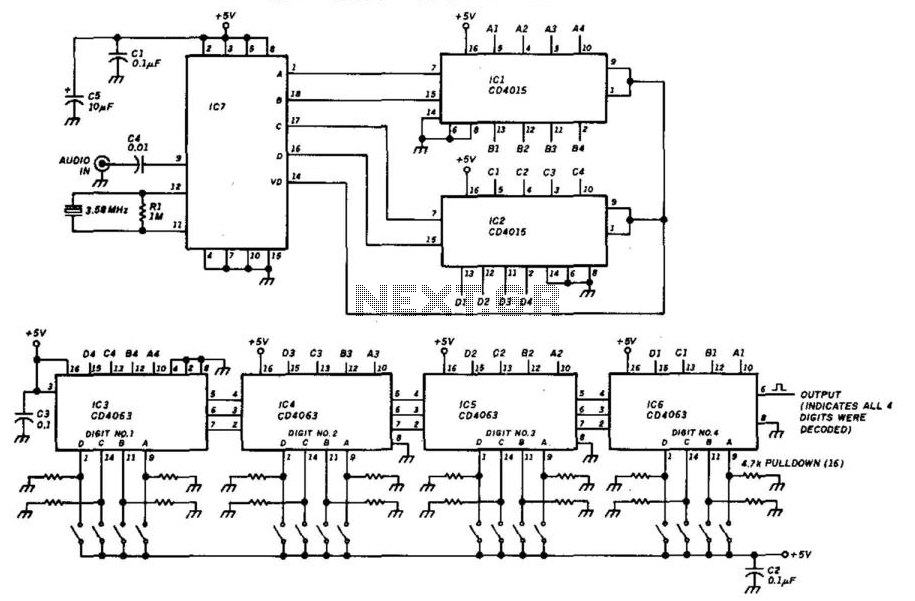
This decoder will respond to a preselected 4-digit DTMF number. IC7 is a Radio Shack IC device (part #276-1303). The logic is all CMOS. The digits are selected by SW1 and SW2, a pair of 8-position DIP switches.
The described circuit employs a DTMF (Dual-Tone Multi-Frequency) decoder that is designed to recognize a specific 4-digit number. The core component, IC7, is a CMOS-based integrated circuit from Radio Shack, identified by the part number 276-1303. This IC is capable of interpreting the audio tones generated by a DTMF keypad, converting them into digital signals that correspond to the pressed keys.
User interaction is facilitated through two 8-position DIP switches, labeled SW1 and SW2. These switches allow for the selection of the desired DTMF digits by configuring the binary inputs that the decoder IC reads. Each switch can be set to either a high or low state, representing binary values that correspond to the DTMF digits 0-9 and the additional symbols such as *, #, A, B, C, and D.
The overall logic of the circuit is implemented using CMOS technology, which is known for its low power consumption and high noise immunity. This makes the circuit suitable for battery-operated devices or applications where power efficiency is critical. The output from the decoder can be used to trigger other components in a system, such as microcontrollers or relays, enabling various applications such as remote control systems, automated dialing, or access control mechanisms.
In summary, this DTMF decoder circuit utilizes a dedicated CMOS IC to recognize a specified 4-digit input, selected via DIP switches, and can interface with other electronic components for further processing or action based on the detected DTMF tones. This decoder will respond to a preselected 4-digit DTMF number. IC7 is a Radio Shack IC device (part #276-1303 ). The logic is all CMOS. The digits are selected by SW1 and SW2, a pair of 8-position DIP switches.
The described circuit employs a DTMF (Dual-Tone Multi-Frequency) decoder that is designed to recognize a specific 4-digit number. The core component, IC7, is a CMOS-based integrated circuit from Radio Shack, identified by the part number 276-1303. This IC is capable of interpreting the audio tones generated by a DTMF keypad, converting them into digital signals that correspond to the pressed keys.
User interaction is facilitated through two 8-position DIP switches, labeled SW1 and SW2. These switches allow for the selection of the desired DTMF digits by configuring the binary inputs that the decoder IC reads. Each switch can be set to either a high or low state, representing binary values that correspond to the DTMF digits 0-9 and the additional symbols such as *, #, A, B, C, and D.
The overall logic of the circuit is implemented using CMOS technology, which is known for its low power consumption and high noise immunity. This makes the circuit suitable for battery-operated devices or applications where power efficiency is critical. The output from the decoder can be used to trigger other components in a system, such as microcontrollers or relays, enabling various applications such as remote control systems, automated dialing, or access control mechanisms.
In summary, this DTMF decoder circuit utilizes a dedicated CMOS IC to recognize a specified 4-digit input, selected via DIP switches, and can interface with other electronic components for further processing or action based on the detected DTMF tones. This decoder will respond to a preselected 4-digit DTMF number. IC7 is a Radio Shack IC device (part #276-1303 ). The logic is all CMOS. The digits are selected by SW1 and SW2, a pair of 8-position DIP switches.


